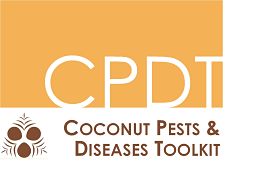Collecting samples for identification
SPC recommends using standard procedures for sample collection as outlined in this West Australian Government web page.
Information on collection of ants and other small insects can also be found in the Pacific Invasive Ant Toolkit.
If you need to send samples out of the country for identification, ensure you meet biosecurity requirements.
As well as taking samples of the plant, make sure to record all the information you can about symptoms (some pests and diseases affect many parts of the plant). Also provide information on growing conditions - the symptoms might be caused by drought or nutrient deficiencies. Do the symptoms only affect isolated plants or whole plantations?
Collect information about how the diseased part of the plant looks and also how it feels. Listen for sounds of insects. What do the diseased parts of the plant smell like?
All these observations can provide useful information for the person who is identifying the problem.
Contact SPC for further information on sample collection.
Tips for taking images
Take images of both healthy and affected parts of the plant.
Take images close up and also from far away.
Try to take images from a higher vantage point so the crown can be seen.
Light can make a difference to how images look. Take images at different times of the day if possible.
With digital cameras it only costs time to take images, so take many but choose the best to send for identification.
Include a meaningful name for your image - perhaps your name, the date and place it was taken.
If you are e-mailing images, remember to compress the images before sending, especially if you know the receiver has a slow internet connection.
